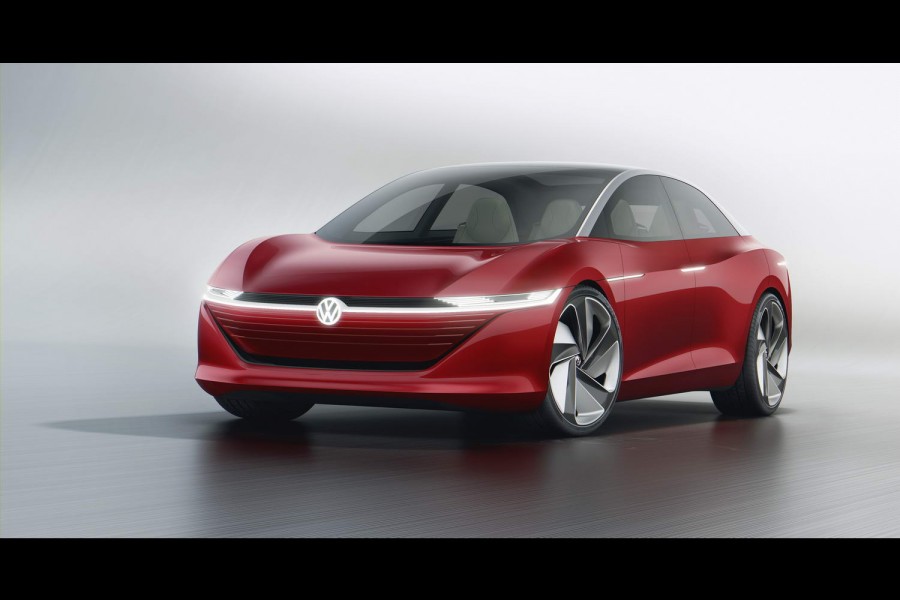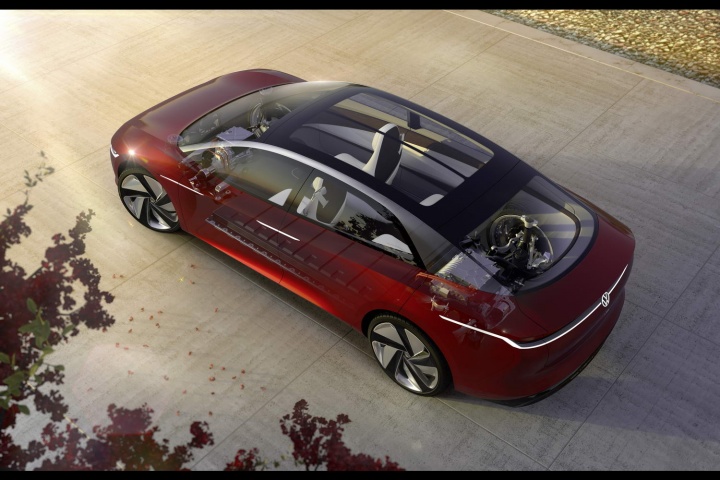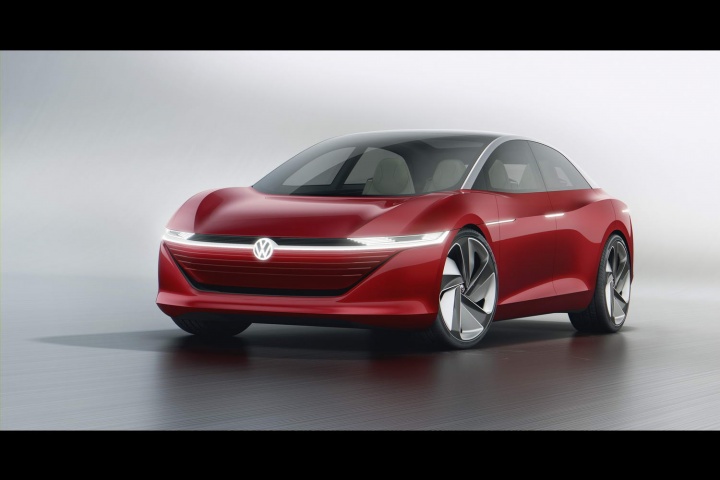What's the news?
This is the fourth entrant into Volkswagen's futuristic ID family of electric cars. We've had the ID compact hatchback, the ID Crozz SUV and the ID Buzz van/MPV and now we have the ID Vizzion, a premium-class electric car that can fully drive itself to Level 5 autonomy and which can also learn, thanks to artificial intelligence. It has received its world debut on the eve of the Geneva Motor Show.
Exterior
It's a big, elegant thing, the ID Vizzion, the show car finished in Baladi Orange paint and sitting on 24-inch wheels with 255/30 tyres. The bodywork measures 5,163mm long, 1,947mm wide and 1,506mm tall - and with a 3,100mm wheelbase, the long roof and short front/rear overhangs, the interior space is maximised. The Vizzion wears much of the previously seen ID design language, while light is said to be 'the new chrome' by Volkswagen - thus, the ID has an illuminated badge and clever light axis displays that flow along the side of the car, highlighting the door handles and other features. The HD Matrix headlights also have 8,000 light pixels, which means the Vizzion could project symbols and displays onto the road surface in front of the car, to better warn pedestrians of what it is doing.
All of the windows on the Volkswagen can be darkened electrically within 200 milliseconds, while the back doors are rear-hinged, allowing them to open in the opposite direction to the fronts by up to 90 degrees; the lack of a B-pillar therefore makes for easy ingress and egress to and from the Vizzion's capacious interior. At the back is a 565-litre boot, more LED light strips and a third, high-level brake light that is actually the entire rear windscreen - it's one huge OLED display. The harder the Vizzion brakes, the more the rear windscreen brake light enlarges from bottom to top.
Interior
Those electrically darkening glass surfaces play more of a feature in the Volkswagen's interior. Passengers access a 'mobile lounge' in the ID Vizzion, which - if you've noticed - has no dashboard area and no steering wheel, as it is only ever designed to drive fully autonomously. That lack of driver controls means the Vizzion has a large interior with four ergonomically balanced, integral seats. The car recognises occupants by biometric facial recognition (or via smartphone), allowing it to call up settings from the cloud for each individual. It can also monitor the passengers' health and adjust the lighting, climate control or interior fragrance accordingly.
It's also a space designed to relax, with foot rests, vegetable-tanned leather in a San Tropez hue and natural, untreated woods from sustainable cultivation finishing the lounge area. All the windows and the full-length panoramic sunroof flood the cabin with light, but obviously the glass can be darkened down to almost total opacity if the occupants within want some privacy. Gesture and voice control is used to marshal the onboard functions of the ID Vizzion, via a 'virtual assistant', with augmented reality allowing a HoloLens to project a virtual interface into the space of the passenger compartment, where various programmes such as Business, Navigation, Entertain, Communication and Learning can be selected, according to who's sitting aboard the Volkswagen.
Mechanicals
Like its ID stablemates, the Vizzion is a pure electric vehicle (EV) with fully autonomous driving capability. Designed to operate in the year 2030 and beyond, when most cars are supposed to be thinking for themselves, the ID Vizzion sits on the All-New Electric Architecture of the Volkswagen Group and has an all-wheel-drive (AWD) system with a maximum output of 225kW (306hp). This is provided by two electric motors, a 75kW (102hp) coaxial drive on the front axle and a compact 150kW (204hp) motor at the rear. Despite no physical driveshaft connecting them, which allows for AWD via sophisticated onboard management, blessing the Vizzion with a 0-100km/h time of 6.3 seconds and a top speed of 180km/h (governed, due to its Level 5 status).
Better still, the ID Vizzion has a whopping 111kWh lithium-ion battery housed in the floor, allowing for a giant 665km range between recharging. And it operates without any need - or allowance - for human intervention via a series of interconnected laser scanners, ultrasonic sensors, radar sensors for objects in the near-distance and radar sensors for objects that are further away, front and rear cameras and side-area-view cameras. None of these sensors are visible, and obviously the ID Vizzion is fully cloud-connected, using swarm intelligence via Car-2-Car and Car-2-X connections to ensure it avoids all hazards and traffic that are on the roads.
Anything else?
Volkswagen has committed to selling the ID models from 2020 onwards, with the ID hatchback the first to go on sale in two years' time.


